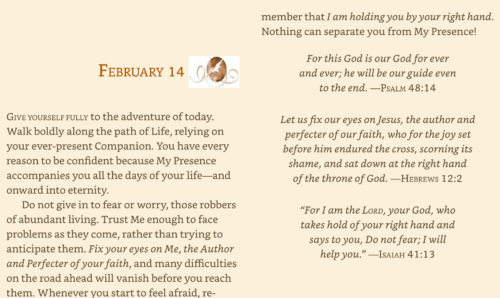A Prayerful Stance
For Father Richard, when we surrender to love in the present moment, we encounter the flow of Divine Presence:
Prayer is not primarily saying words or thinking thoughts. It is, rather, a life stance. It’s a way of living in the Presence, living in awareness of the Presence, and even of enjoying the Presence. Fully contemplative people are more than aware of Divine Presence; they trust, allow, and delight in it. They “stand” on it!
The contemplative secret is learning to live in such a now. The now is not as empty as it might appear to be or that we fear it may be. Try to realize that everything is right here, right now. When we’re doing life right, it means nothing more than it is right now, because God is in this moment in a non-blaming way. When we are able to experience that, taste and enjoy it, we don’t need to hold on to it. The next moment will have its own taste and enjoyment.
Because most of our moments are not tasted or real or in the Presence, we are never full. We create artificial fullness and want to hang on to that. But there’s nothing to hold on to when we begin to taste the fullness of now. God is either in this now or God isn’t at all. If the now has never been full or sufficient, we will always be grasping. Here is a litmus test: If we’re pushing ourselves and others around, we have not yet found the secret of happiness. This moment is as full of the Divine Presence as it can be. Saints have called this the “sacrament of the present moment.”
The present moment has no competition; it is not judged in comparison to any other. It has never happened before and will not happen again. But when I’m in competition, I’m not in love. I can’t get to love because I’m looking for a new way to dominate. The way we know this mind is not the truth is that God does not deal with us like this. The mystics, those who really pray, know this. Those who enter deeply into the great mystery do not experience a God who compares, differentiates, and judges. They experience an all-embracing receptor, a receiver who recognizes the divine image in each and every individual.
For Jesus, prayer seems to be a matter of waiting in love. Returning to love. Trusting that love is the deepest stream of reality. That’s why prayer isn’t primarily words; it’s primarily an attitude, a stance, a modus operandi. That’s why Paul could say, “Pray always.” “Pray unceasingly.” If we read that as requiring words, it is surely impossible. We’ve got a lot of other things to do. We can pray unceasingly, however, if we find the stream and know how to wade in its waters. The stream will flow through us, and all we have to do is keep choosing to stay there.
Love’s Method of Communication
Carmelite nun Ruth Burrows has reflected deeply on the nature of prayer through her numerous books. Here she describes prayer as our inner “Yes” to what God seeks to do, which is always to love us:
Almost always when we talk about prayer we are thinking of something we do and, from that standpoint, questions, problems, confusion, discouragement, illusions multiply. For me, it is of fundamental importance to correct this view. Our Christian knowledge assures us that prayer is essentially what God does, how God addresses us, looks at us. It is not primarily something we are doing to God, something we are giving to God but what God is doing for us. And what God is doing for us is giving the divine Self in love.
[For Christians,] any talk of prayer, if we are to stand in the clear, pure atmosphere of truth, must begin by reflecting in firm belief on what Jesus shows us of God. Let us push straight to the heart of the matter. What is the core, the central message of the revelation of Jesus? Surely it is of the unconditional love of God for us, for each one of us: God, the unutterable, incomprehensible Mystery, the Reality of all reality, the Life of all life. And this means that divine Love desires to communicate Its Holy Self to us. Nothing less! This is God’s irrevocable will and purpose; it is the reason why everything that is, is, and why each of us exists. We are here to receive this ineffable, all-transforming, all beatifying Love.
CAC teacher James Finley likewise understands meditation and prayer as the opportunity to realize God’s constant love for us at all times:
To practice meditation as an act of religious faith is to open ourselves to the endlessly reassuring realization that our very being and the very being of everyone and everything around us is the generosity of God. For God is creating us in the present moment, loving us into being, such that our very presence in the present moment is the manifested presence of God. We meditate that we might awaken to this unitive mystery, not just in meditation, but in every moment of our lives. [1]
Burrows continues:
Basing ourselves, therefore, on what Jesus shows us of God . . . we must realize that what we have to do is allow ourselves to be loved, to be there for Love to love us. . . .
The essential thing we have to do is believe in the enfolding, nurturing, transforming Love of God which is the Reality: the Reality that is absolutely, totally there whether we avert to It or not. Prayer, from our side, is a deliberate decision to avert to It, to respond to It in the fullest way we can. To do this we must set time aside to devote exclusively to the ‘Yes’ of faith.
